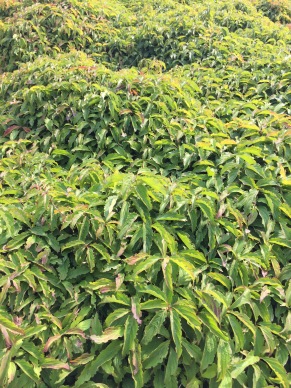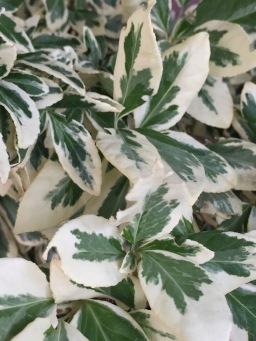I explored the Washington State University campus to find my inspiration of various textures and patterns. Looking at my surroundings I kept thinking about the endless cycle that makes a pattern. The book mentions that almost any pattern is made from dots, stripes, or grids. Dots join making linear elements/ other shapes resulting in stripes colliding into each other. This collision makes a grid and new figures are formed due to cuts in the grid. These new forms are the beginning of another cycle that grows into another grid. I learned that the grid is made of smaller components that establishes a larger texture. The book says that “creating a larger texture is what a grid is all about”.

Bushes outside the Murrow building (a)
In my first photo (a) the image shows irregular forces creating the pattern. When thinking about the texture of the photo the contrast on the leaves edges creates an optical appearance, the virtual texture of the piece. The contrast creates a sharpness, but the literal surface of the leaves tells that the texture is actually soft. The optical and physical textures can be different (think about people that have short hair that spikes up). Halle Berry‘s physical texture in her hair is different than her virtual texture.

Bushes outside the Academic Media Services building (b)
My second image (b) has irregular forces from nature that make their pattern as well. The physical and virtual texture are rather similar in this piece though. My hypothesis is that since there is less of a contrast between the two main colors on the leaves, then the image gives a smoother presence. The way the leaves are cut is rounder, giving a softer display.
